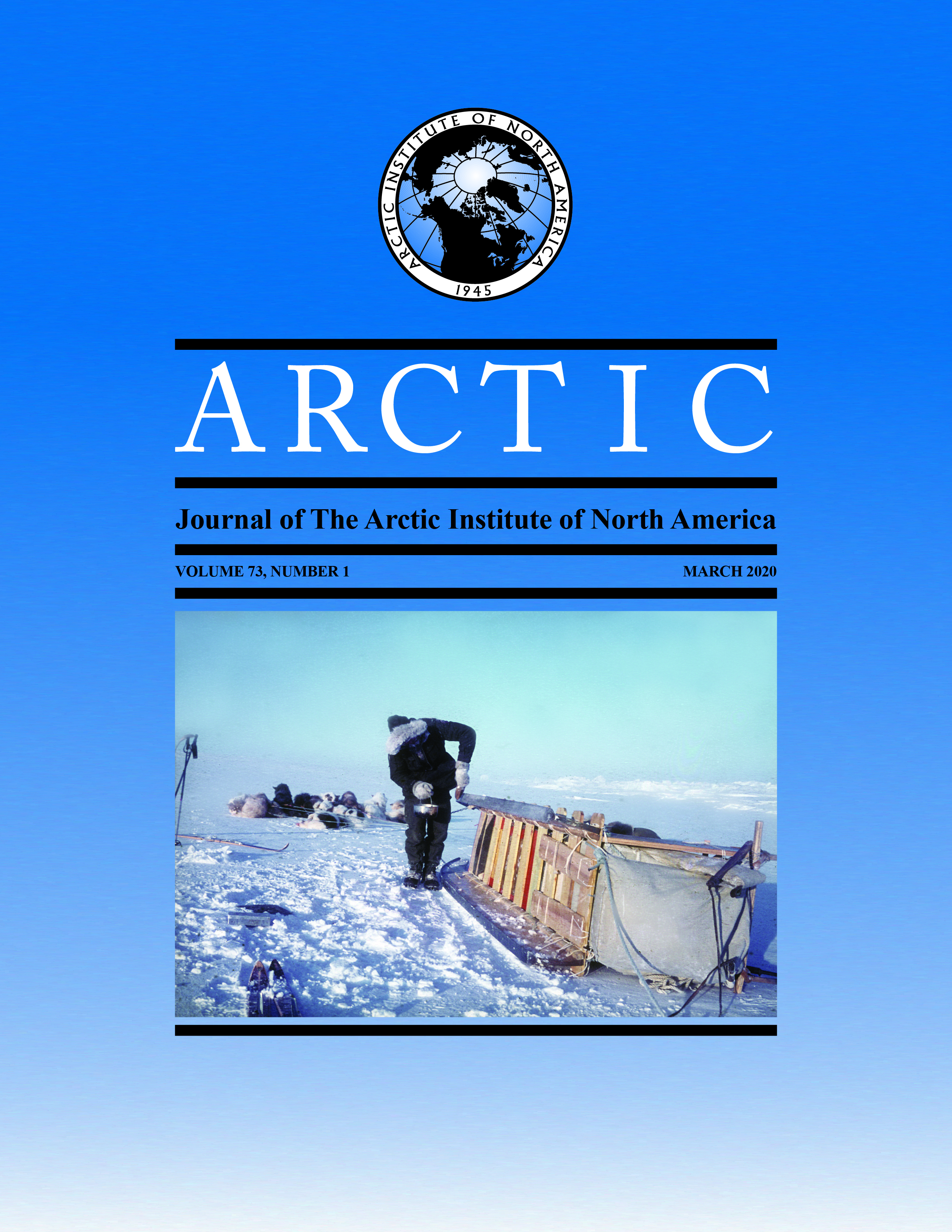Observations of Annual Walrus (Odobenus rosmarus divergens) Migrations in the Nearshore Waters of the Chukotka Peninsula from 1990 to 2012
DOI:
https://doi.org/10.14430/arctic70035Keywords:
walrus; Odobenus rosmarus divergens; shore-based visual observations; Chukotka Peninsula; Gulf of Anadyr; Chukchi Sea; Bering Sea; migrationAbstract
After the end of the commercial harvest, research regarding the Pacific walrus (Odobenus rosmarus divergens) in Russia was reduced and focused on the observation of animals at land-based haul-outs. This paper presents the long-term observations of the distribution, relative abundance, and direction of seasonal movements of walruses in the offshore waters of the Chukotka Peninsula, based on data obtained in 1990 – 2012. Observations of Pacific walruses and other marine mammals were conducted mainly from April through November, but some were conducted all year round. In some years up to 30 Native Chukotkan observers were employed at this task. Some watched from observation posts in Native villages onshore, and others from motorboats during hunting trips. These observations have shown that walruses are rare in January and February in the nearshore waters of the Chukotka Peninsula. Their numbers begin to increase in March. The northward movement of walruses begins in April, and walruses migrate from the Bering Sea to the Chukchi Sea throughout the summer months and early autumn. Based on observations from posts located directly in front of the southern Bering Strait, I conclude that 106 – 1055 walruses pass through the Bering Strait from July to September, to the northwest and north. At the haul-outs in the Gulf of Anadyr, the relative number of walruses remains stable during the summer (up to 11 000 individuals at all haul-outs in total based on observers’ estimates) and decreases only with the appearance of ice in October – November.
Downloads
Downloads
Published
Issue
Section
License
Copyright (c) 2020 ARCTIC

This work is licensed under a Creative Commons Attribution 4.0 International License.


